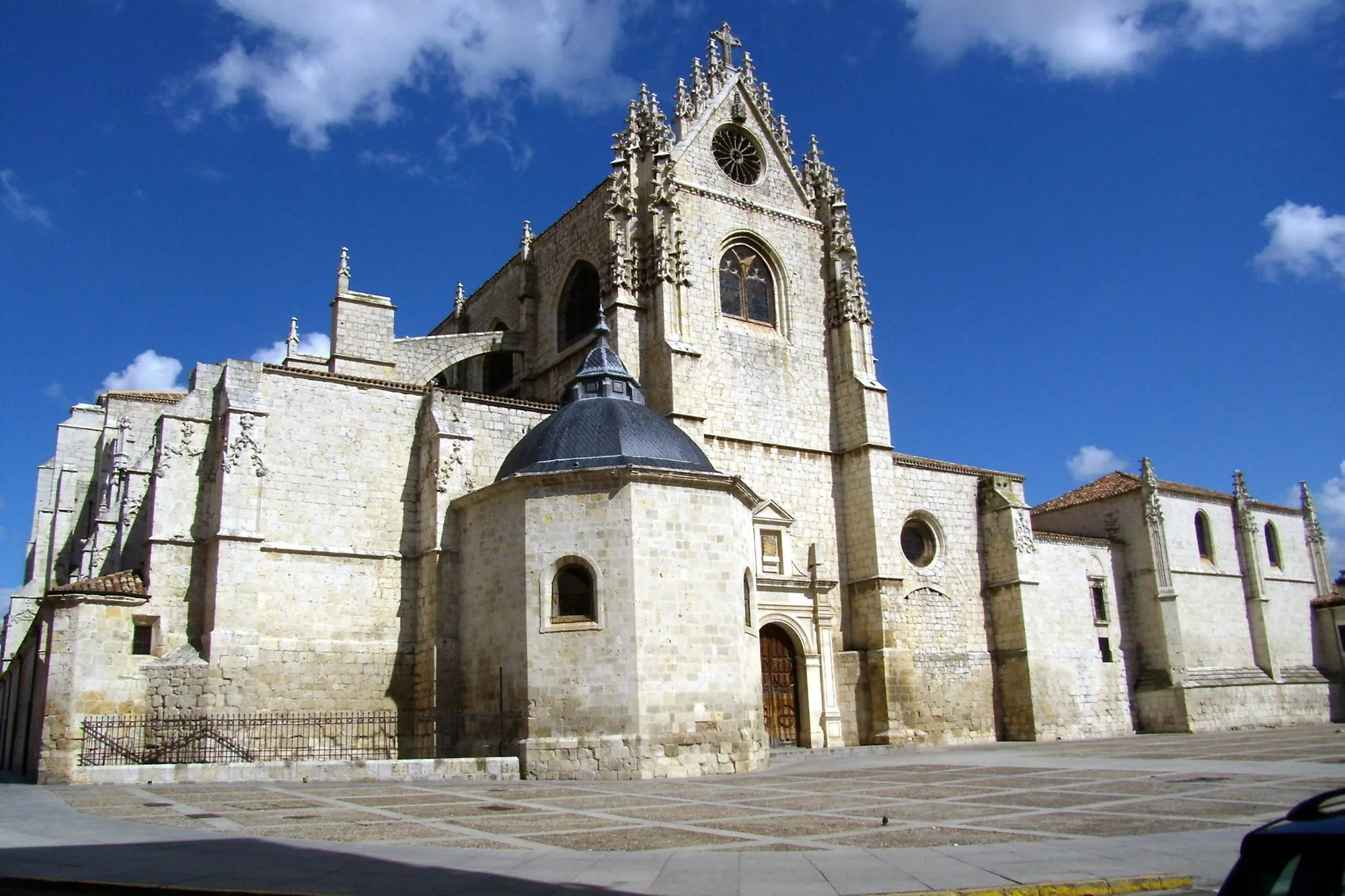
Cookie settings
We use our own and third-party cookies in order to offer our services, display videos, obtain statistics and offer personalized advertising.
For more information, please read our cookies policy.

Placed in Plaza Cervantes, the visitor in taken by surprise by the dimension and severity of its tower.
The flying buttres of its apse tells us about the presence of this temple from the streets of Santa Teresa and Jorge Manrique. This Cathedral is named the Unknown Beauty became of the great amount and quality of art works that are kept inside, from Visigothic to Renaissance Art.
It was built some old houses devoted to the cult, but its origin maybe found in the Visigothic Crypt from the VIII century devoted to San Antolin, where the Saint’s relics are kept nowadays.
The legend says that the king of Navarra was trying to hunt a wild board and he entered a cave where he tried to throw his lance against the animal, suddenly he felt his arm paralized and wasn’t able to hunt the wild board. He realized it was a sacred place and he declared it that way. The place is the atual Crypt.
The Romanic Cathedral was consecrated by the bishop Tello Tellez and we can still observe some remains from that time like olumns and coloured woods.
The new Cathedral was begun to be built in the XIV century and its construction went on for centuries. It was honoured as a National Monument in 1929.
In the outside, is 30 meter high tower characterizes the image of the temple that shows no main front.
The three naves design, similar to the one in Burgos Cathedral, produces an interior full of beauty and details. The predominant verticality is only broken by the triforium.
Under the Chorus, in the entrance to the Crypt we must point out the Plateresque Art of the bass-relieves, showing scenes from king Sancho and the martyrdom of Santo Toribio. The Crypt is also a two naves old temple, the first one in a Visigothic style from the VII century and the second one in a romanic style from the XI century with a great canyon dome influenced by the prerromanesque style.
The Retrochoir was made by Juan Ruesga and it was ordered to be done by the bishop Fonseca. The shield of this bishop is under the arch of the Catholic King and Queen. The side parts of the choir are an art work by Diego de Siloe. The altar of the Saviour, surrounded by the Four Evangelists by Felipe de Vigarny and the Altar of the Christ of the Battles is signed by Pedro de Guadalupe.
The Choir shows the first valnut choir stalls by Luis Centellas that was widened by Pedro de Guadalupe in the XVI century. The Sacred Chapel, by Sancho de Rojas, has a five side form and it’s covered with ribs.
The main chapel with an altarpiece by Pedro de Guadalupe and Pedro Mansohas sculptures by Felipe de Vigarny and Gregorio Hernandez. The most outstanding graves are those belonging to the Abbot of Husillos and the Dean Enriquez.
Built: XIII-XVIII Centuries.
Author: Anónimo
Style: Gothic, Renaissance
Category: Religious
Type: Cathedral
Address and telephone
Opening times
Prices
If you see any mistakes or want to add anything to this information, please contact us.
To display this map, you have to accept analytical and advertising cookies. Cookie settings.

Book your hotel